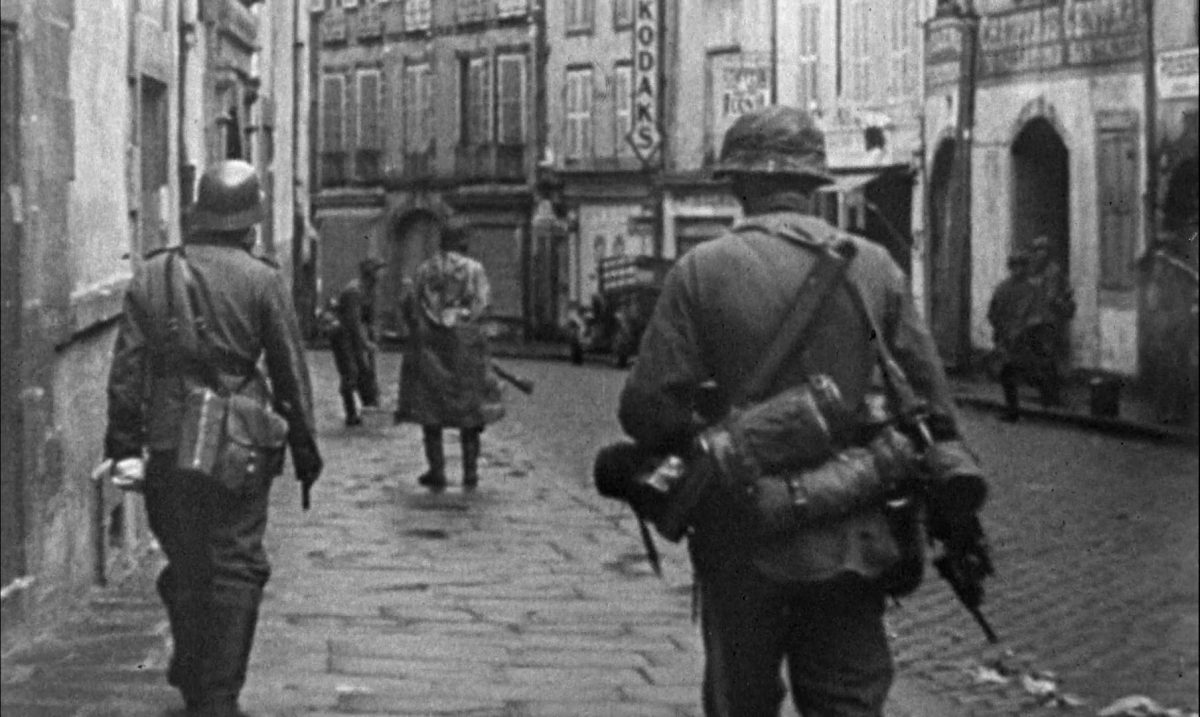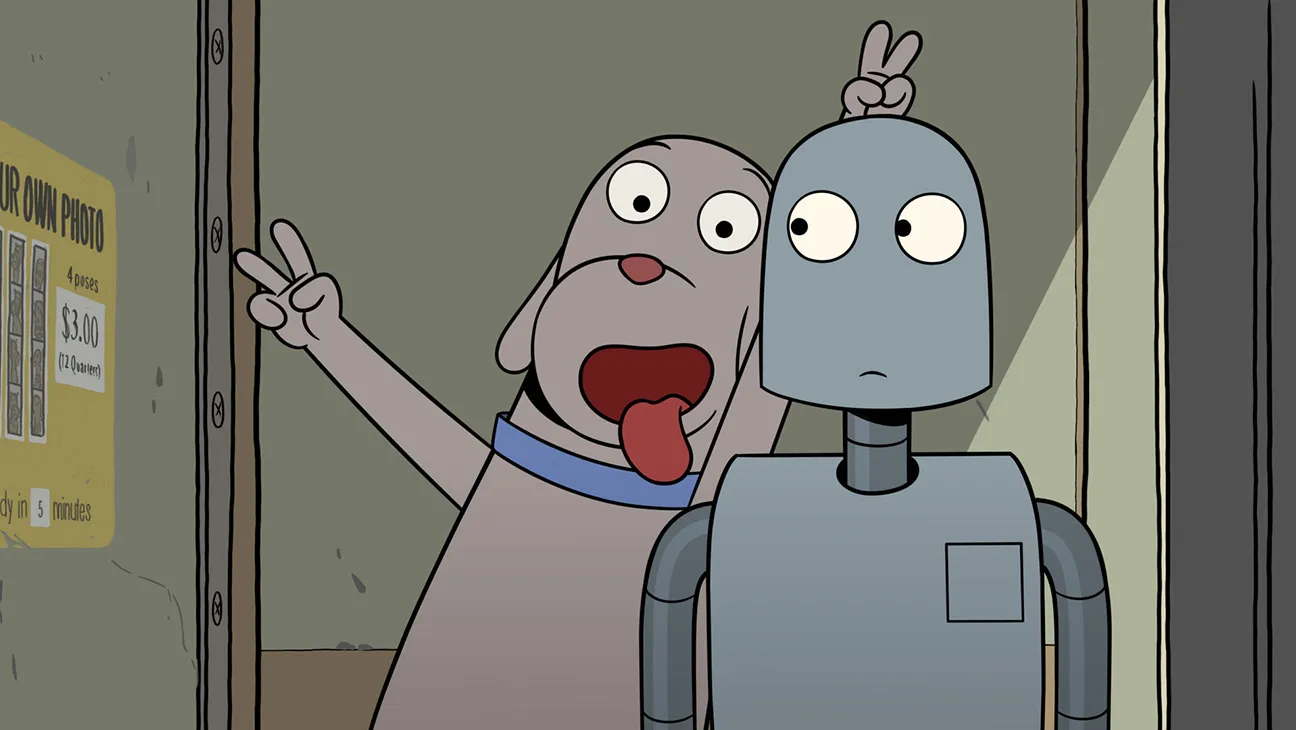by Andrew Sarris
Marcel Ophüls’s The Sorrow and the Pity runs about four and a half hours without an intermission (about five hours with); but, in terms of moral, intellectual, and emotional absorption, it is one of the shortest movies of the year. I mention this temporal paradox at the outset simply to warn any prospective American distributors and exhibitors that there is no fat to cut from The Sorrow and the Pity. No fat and no fatuousness. Only the irreducible wholeness of a delicately balanced meditation on the mysteries of courage, cowardice, and commitment. Thus, far from wearying most members of the audience at the recently concluded New York Film Festival, the film’s relative thoroughness managed to whet their appetites for more revelations and illuminations on a dramatic but hitherto idealized chapter of French history: the German occupation from 1940 through 1944. To be exhaustive without being exhausting requires more than mere tricks of showbiz pacing and spacing. It requires a coherent and consistent vision of the world, nothing less than a veritable laser beam of concentration capable of piercing a bewildering array of surface idiosyncrasies to find the universal core underneath.
As it happens, Le Chagrin et la Pitie opened unobtrusively in a small art house on the Paris left bank until the turnaway crowds persuaded the fat-cat exhibitors to move it over to the Elysian Fields, and without any elisions in the film. But that was France, some people may say. What does the film have to say to us here in the good old guilt-ridden USA? My initial soundings indicate that the film is rich enough to sustain a great many interpretations both as history and as allegory. Local ideologues who feel they have been howling in the wilderness while life around them went on as usual may feel vindicated by some of the testimony in the film. Just as some Frenchmen, even more than the worst Germans, were the worst enemies of other Frenchmen, so do some Americans consider other Americans their worst enemies. We have been tossing around the notion of self-hatred too easily here in America. Perhaps it isn’t ourselves we hate so much as our immediate neighbors. After all, even the late Joe McCarthy hated Owen Lattimore far more than he hated Chairman Mao or Uncle Joe. Most murders are transacted between people who know each other fairly intimately. Even those classical monsters, the Nazi death-camp killers, are now treated in some circles as relative humanitarians next to LBJ and Dick Nixon, and to argue the contrary is treated in these same circles as evidence of excessively Zionist zeal.
Hence, I noted a smattering of applause when a former officer in the Wehrmacht defended his wearing of military medals granted by the Nazi regime. “They still give out medals for the same sort of thing,” he argued. True enough. Perhaps our whole apparatus of collective guilt was built on nothing more substantial than the power of winners to lecture losers. But if I felt that The Sorrow and the Pity were merely a pretext to rehash the same old left-right, red-black, pink-brown debating points, I would consign it to the ever mounting pile of idiotically ideological cinema. Fortunately, Marcel Ophüls and his colleagues do not so much exploit their subject as ennoble it. How? Certainly not by any fancy cinematics, but merely by allowing the witnesses to shape the course of the trial.
Oh, almost everyone these days pays lip service to the doctrine of letting the material of documentary establish the message. No preconceptions, no preconceptions, say the Wisemans, the Leacocks, the Maysles, and their disciples. And all the while these professional scavengers, these preening snobs, take their cameras up the nostrils of their victims so that elitist audiences may recognize once and for all the inescapable mediocrity of mucous. Wiseman, in particular, seems to enjoy ridiculing his social and cultural inferiors under the guise of institutional criticism. And only people who were socially and culturally intimidated by Wiseman’s phony credentials as a sociologist with a camera would sit still for his boringly malicious ego trips at their expense.
By contrast, Ophüls seeks to illuminate an era by tracking down its noblest and most articulate survivors: Pierre Mendés-France, former Premier of France, aide to de Gaulle in the Resistance period, captain of the “Lorraine” Group; Lord Avon, better known to Americans as Anthony Eden; Dr. Claude Levy, biologist and writer; Emmanuel d’Astier de la Vigerie, founder of the “Liberation” movement; Georges Bidault, president of the National Resistance Council; Emile Coulandon, called “Colonel Gaspard,” head of the Auvergne maquis; Marcel Fouche-Degliame, director of the “Combat” movement; Maurice J. Buckmaster, head of the English underground; Denis Rake, an English secret agent; General Spears, liaison between Churchill and de Gaulle; and, above all, Louis Grave, a heartbreakingly virtuous peasant resistance fighter with a capacity for forgiveness (from the edge of the yawning furnaces of Auschwitz) almost beyond belief.
If I have omitted Jacques Duclos, head of the clandestine French Communist Party, from the roster of the lucidly good guys, it is because his very rhetorical answers to questions seemed to smack less of a personal credo than of a party manifesto. Also, Ophüls and his colleagues never pursue the implications of resistance rivalries between the Communists and the anti-Communists, and indeed of the questionable behavior of the French Communist Party between the signing of the Nazi Soviet Pact on August 24, 1939, and the Nazi invasion of the Soviet Union on June 22,1941, an interval in which, as the late George Orwell observed, French Communist Party Chief Maurice Thorez remained safely in Moscow while Nazi legions streamed across the French Capitalistic Countryside. Ophüls and his colleagues cannot be reasonably criticized, however, for not covering every aspect of their vast subject. Indeed, they have conscientiously restricted most of their coverage to the town of Clermont-Ferrand near Vichy, and to the memories of those who passed through it. The only time I thought the irony was becoming heavy-handed was when René de Chambrun, lawyer, and son-in-law of Pierre Laval, made a desperate attempt to redeem the reputation of his notorious father-in-law. Laval is too much to stomach, even for Ophüls. But not Christian de la Mazière, a veteran of the French Waffen SS (“Charlemagne” division), and one of the artistic triumphs of The Sorrow and the Pity. In the very castle where Pétain and Lavel sought refuge across the Rhine from the advancing Allied armies, de la Mazière walks with Marcel Ophüls, son of the imperishable Max, and talks about commitment, and suddenly the emotional focus of the film shifts unexpectedly from the question of right choices and wrong choices to the feeling that any choice, right or wrong, right or left, is preferable to no choice at all. We begin to wonder how many of the people who cheered Pétain turned around and cheered de Gaulle when the tide had turned the other way.
I asked Marcel Ophüls if he had wondered himself, and he merely smiled, and said that he had, but that he hadn’t wanted to press the point too strongly. I asked him about Maurice Chevalier, and he asked me what I thought about his treatment in the film, and I said that I found Chevalier in this context grotesquely egocentric, and Ophüls thought I was being too hard on Chevalier whom he (Ophüls) admired as the ultimate entertainer, the kind of man who always adapted himself to whichever way the wind was blowing. I told Ophüls that I had seen more extensive footage of French actors and actresses (Darrieux, Delair, Préjean, etc.) traveling through Germany during the Occupation, and that said footage had been shown to me under the auspices of the East Berlin Cinematheque. Ophüls himself had no access to East German archives and relied instead on French, English, and West-German sources for the most part. And, of course, there was an enormous amount of material he couldn’t use.
I suppose every viewer will find some moment or other to treasure in this testament. I don’t suppose I will ever forget Mendés-France’s description of the anti-Semitism that swept through Casablanca after the fall of France, and of the indignities his own wife suffered as a consequence. I suppose Rick’s Place will always seem a little more rickety after listening to Mendés-France. (Ophüls told me that the only time Mendés-France broke down was when he began to speak of his wife’s suffering in this period.) But what has remained on the screen is the ability of a great many extraordinary people to look at themselves from the outside as participants in a historical drama, and to tell us better than we could ever imagine what it was really like in those days. Of course, the French have had a great deal of practice with this mystical conception of the Germans as the embodiments of what was evil and reactionary in France. The same morality play was acted out in 1789 and 1870. In 1918 the happy ending of melodrama could not conceal the mountains of corpses, and in 1940 it was the hero of Verdun who preached “Peace at any price.”
Anthony Eden was very wise when he noted that no country that had escaped enemy occupation could afford to feel superior to France under the Vichy regime. As I looked around me at Lincoln Center, I wondered how many of us would take to the Catskills to mount a resistance, and how many of us would stay on as usual in Manhattan, and make the best of a bad situation. It would depend somewhat on the ideology of the occupiers, but not entirely. Courage and cowardice are abstract qualities, and no one can predict them in one’s self or in others. What mysterious link could there have been between a self-professed homosexual actor like Denis Rake and a self-professed socialist peasant like Louis Grave, and yet there they were and there they are, brothers in arms, possessors of a quality in common that lifts them far above most of us mere mortals.
It is to the credit of Marcel Ophüls and his colleagues that they accept the harsh judgment of history by presenting authentic heroes not so that we can identify with them, but so that we can admire them from afar. Above all, these heroes are allowed to speak in the context of an intellectual tradition of documentary which seems to come mostly out of France (vide Resnais’s Night and Fog and Rossif’s To Die in Madrid). Perhaps the Anglo-American documentary movement could be salvaged with an emergency transfusion of glorious language, but bad aesthetic habits seem to linger forever. So go see The Sorrow and the Pity for genuine eloquence in three languages.
Village Voice, November 1971





